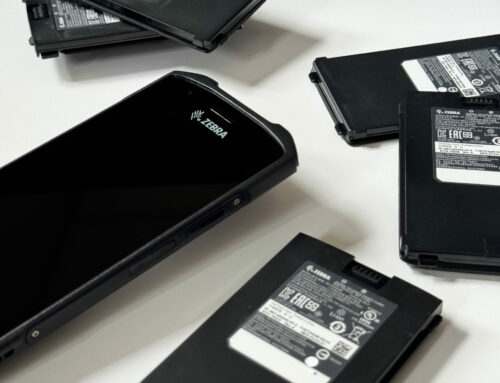How to Improve Your Device’s Cost of Ownership

Mobile devices have become indispensable tools for organizations worldwide, influencing critical aspects of daily operations. However, the financial impact extends well beyond the initial purchase cost. As emphasized in a recent blog by Zebra Technologies, the initial hardware cost represents only 10% of the overall expense, underscoring the crucial role that usage and efficient device management play in the Total Cost of Ownership (TCO).
“The sticker price – or upfront cost – is just one line item contributing to the total cost of mobility or the total cost of ownership,” emphasizes the blog. This revelation challenges the conventional mindset fixated on the initial investment, urging organizations to adopt a broader perspective when assessing the true economic impact of mobile devices.
Long-standing analyst firm VDC, which specializes in mobile computing TCO, further emphasizes this by identifying lost worker productivity and IT administrative overhead as the primary drivers of TCO. It’s not solely about the device itself; it’s about how effectively it integrates into daily operations. Inefficiencies and disruptions in workflows can compound over time, resulting in significant hidden costs that extend beyond the initial acquisition.
“We’ve had high-end retailers report that 14-20% of their fleets go missing each year, with several reporting well over 20%+ per year,” the blog adds, highlighting the vulnerability of these mobile assets. In addition to shrink, device failure rates (due to damage or malfunction) are reported to exceed 5% annually. These alarming statistics emphasize the need for robust device management systems that not only track the physical location of devices but also ensure their optimal performance and security.
Now, let’s delve into the other 90% of the device’s TCO. A significant portion of this cost can be attributed to the lack of balance between device usage and the effectiveness of device management systems. An inefficient system can lead to prolonged downtime, resulting in skyrocketing IT support costs. A substantial share of devices sent to a service center are returned with “no trouble found” (NTF). These issues incur significant costs, with lost mobile worker hours compounding with IT service costs, shipping fees, and wait times as devices are rebooted. NTF returns put users in a precarious position, with no issue resolution to prevent reoccurrence. In fact, statistics from Zebra’s research reveal that organizations can incur monthly IT support costs of $56.67 per device ticket (or $680 annually) due to the time-consuming process of troubleshooting issues arising from poorly managed devices.
The report also highlights lost worker productivity as a leading driver of TCO. Without proper device management practices in place, companies experience 1.2 incidents a month per device. In addition to the previously mentioned IT costs, workers experience a disruption of 74 minutes per incident. At a labor rate of $35/hour, this puts the cost per incident at $43, equal to $621 annually. These findings indicate that investing in a quality device management system can lead to a substantial increase in worker productivity, significantly reducing a device’s TCO.
But how much will a device management system really help? According to our recent study, due to more accurate device issue reporting and the accountability driven by the ARC system, clients saw an 84% reduction in manager payroll due to time saved troubleshooting devices and helping associates. With fewer device-related incidents, managers were able to reclaim working hours and be more productive. Associate payroll was also reduced by 68%, without the need to wander around looking for a charged device or swapping out bad ones during their shift.
More robust reporting is another key differentiator when it comes to IT overhead costs. With increased visibility into device issues, 94% of reported issues were able to be resolved onsite without being sent to return merchandise authorization (RMA). The visibility created by reporting offers a quicker resolution to device issues while keeping malfunctioning devices out of circulation, allowing workers to operate more efficiently.
Our study found that with a proper device management system in place, businesses no longer needed to keep an excessive number of spare devices on hand. With ARC, this client was able to reduce their spare pool by 93% and reduce device shrink to only 2%.
While the total cost of ownership may extend beyond the initial acquisition cost, this should not dissuade businesses from investing in quality mobile computing technologies. By implementing robust device management systems like ARC, organizations can streamline workflows and gain real-time visibility into device location and status, minimizing the need for surplus and effectively reducing the devices’ TCO.








